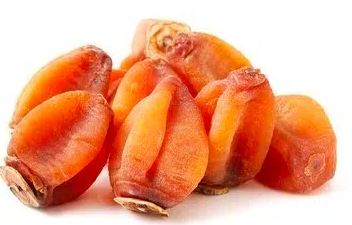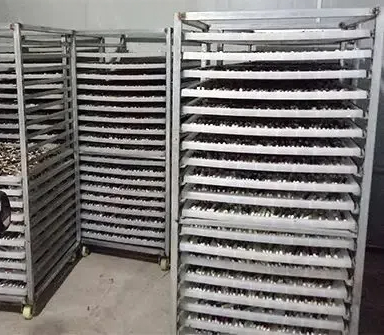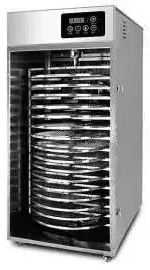
Content Menu
● Introduction
● What is a Heat Pump Dryer?
● Advantages of Heat Pump Dryers in Food Processing
>> Energy Efficiency and Cost Savings
>> Environmental Benefits and Sustainability
>> Versatility in Drying Various Food Types
● The Food Drying Process
>> Preheating
>> Constant-Rate Period
>> Falling-Rate Period
● Applications of Heat Pump Dryers in the Food Industry
>> Fruits and Vegetables
>> Meats
>> Herbs and Spices
● Challenges and Considerations
>> Initial Investment and Operational Costs
>> Maintenance and Technical Challenges
● Future Trends in Food Drying Technology
>> Innovations in Heat Pump Technology
>> The Role of Automation and Smart Technology
● Conclusion
● Frequently Asked Questions
>> 1. What types of food can be dried using heat pump dryers?
>> 2. How does a heat pump dryer differ from traditional dryers?
>> 3. What are the energy savings associated with heat pump dryers?
>> 4. Are heat pump dryers suitable for all types of food?
>> 5. What maintenance is required for heat pump dryers?
Introduction
Food preservation is a critical aspect of the food industry, ensuring that products remain safe and nutritious for consumption over extended periods. Among various preservation methods, drying stands out as one of the oldest and most effective techniques. In recent years, heat pump technology has emerged as a revolutionary approach to food drying, offering numerous advantages over traditional methods. This article explores the intricacies of heat pump dryers, their benefits, and their applications in the food industry.

What is a Heat Pump Dryer?
A heat pump dryer is an advanced drying system that utilizes a closed-loop process to remove moisture from food products. Unlike conventional dryers that expel hot air outside, heat pump dryers recycle air within the system, significantly enhancing energy efficiency. The process involves extracting moisture from the food while maintaining a controlled temperature, which is crucial for preserving the quality of the dried product.
Advantages of Heat Pump Dryers in Food Processing
Heat pump dryers offer several advantages that make them an attractive option for food processors:
Energy Efficiency and Cost Savings
Heat pump dryers consume significantly less energy than traditional drying methods, leading to lower operational costs. This efficiency is particularly beneficial for businesses with high drying demands.
Environmental Benefits and Sustainability
By recycling air and reducing energy consumption, heat pump dryers contribute to a smaller carbon footprint. This aligns with the growing emphasis on sustainable practices in the food industry.
Versatility in Drying Various Food Types
Heat pump technology can be adapted to dry a wide range of food products, from fruits and vegetables to meats and herbs. This versatility makes it a valuable tool for food manufacturers.

The Food Drying Process
The food drying process using heat pump technology involves several stages:
Preheating
The food is initially preheated to prepare it for drying. This step helps to reduce the moisture content more effectively.
Constant-Rate Period
During this phase, moisture moves from the interior of the food to the surface at a consistent rate. The heat pump maintains optimal conditions to facilitate this transfer.
Falling-Rate Period
As the moisture content decreases, the rate of moisture removal slows down. The heat pump continues to regulate temperature and airflow to ensure thorough drying without compromising the food's quality.
Applications of Heat Pump Dryers in the Food Industry
Heat pump dryers have found applications across various sectors of the food industry:
Fruits and Vegetables
Heat pump technology is ideal for drying fruits and vegetables, preserving their color, flavor, and nutritional value. Products like apples, bananas, and tomatoes benefit significantly from this method.
Meats
The ability to control temperature and humidity makes heat pump dryers suitable for drying meats, ensuring safety and quality in products like jerky.
Herbs and Spices
Delicate herbs and spices can be dried without losing their essential oils and flavors, making heat pump dryers a preferred choice for producers.
Challenges and Considerations
While heat pump dryers offer numerous benefits, there are challenges to consider:
Initial Investment and Operational Costs
The upfront cost of heat pump dryers can be higher than traditional systems. However, the long-term savings in energy and operational costs often justify this investment.
Maintenance and Technical Challenges
Regular maintenance is essential to ensure optimal performance. Operators must be trained to handle the technical aspects of these systems.
Future Trends in Food Drying Technology
The future of food drying technology is promising, with several trends emerging:
Innovations in Heat Pump Technology
Ongoing research and development are leading to more efficient and effective heat pump systems, further enhancing their capabilities.
The Role of Automation and Smart Technology
The integration of automation and smart technology in heat pump dryers is expected to streamline operations, improve monitoring, and enhance overall efficiency.
Conclusion
Heat pump technology represents a significant advancement in food drying processes, offering energy efficiency, sustainability, and versatility. As the food industry continues to evolve, the adoption of heat pump dryers is likely to increase, paving the way for more efficient and environmentally friendly food preservation methods.

Frequently Asked Questions
1. What types of food can be dried using heat pump dryers?
Heat pump dryers can effectively dry fruits, vegetables, meats, and herbs, preserving their nutritional value and flavor.
2. How does a heat pump dryer differ from traditional dryers?
Unlike traditional dryers that vent hot air outside, heat pump dryers recycle air, making them more energy-efficient and environmentally friendly.
3. What are the energy savings associated with heat pump dryers?
Heat pump dryers can save up to 50% more energy compared to conventional dryers, significantly reducing operational costs.
4. Are heat pump dryers suitable for all types of food?
Yes, they are versatile and can be used for a wide range of food products, including delicate items that require gentle drying.
5. What maintenance is required for heat pump dryers?
Regular cleaning of filters and checking for any blockages in the air circulation system are essential for optimal performance.












